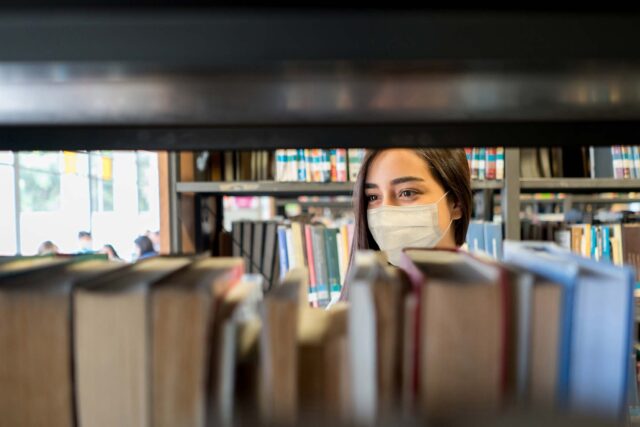Student counts dropped at California’s community colleges during the pandemic, exacerbating pre-existing issues with enrollment. At a briefing last week for a new report, PPIC researcher Cesar Alesi Perez outlined enrollment and persistence declines among transfer-intending students, who account for 57% of all community college students. The steepest enrollment drop was among first-time students, especially Asian and Latino students.
Community college students who were able to stay enrolled did relatively well despite pandemic disruptions—results that came with a caveat from Perez that those who stayed faced fewer pandemic challenges. Furthermore, reforms like AB 705 may have lowered some obstacles.
Challenges with enrollment and persistence are not new, but the pandemic may lead colleges to investigate new strategies to attract and retain students. After Perez offered recommendations that included expanded dual enrollment (a program that allows high school students to take college courses on their high school campus) and outreach to adult learners, PPIC researcher Jacob Jackson led a panel discussion around community college efforts to expand supports and develop equity-minded reform.
Nikki Edgecombe, senior research scholar at Community College Research Center, praised colleges for their work innovating, training faculty, and expanding offerings during the pandemic, but acknowledged that efforts must better align with students’ needs, especially in the online environment. “We have for some time struggled with figuring out the best way to deliver online learning and online student services supports in ways that support academic success.”
Despite advances in online offerings, students want to come back to campus, a point that Marvin Martinez, chancellor of Rancho Santiago Community College District, stressed throughout the discussion. “During COVID, many students had to rely on paying for their internet, getting top-notch laptops … studying from a two-bedroom apartment.” Students want to return to the campus environment, to state-of-the art libraries and labs.
College affordability, however, remains a factor in whether or not students can return. Addressing this issue will involve shifting the financial burden from students to institutions, according to Rebecca Ruan-O’Shaughnessy, vice chancellor for educational services and support at California Community Colleges. “We have been blessed with robust investment into our system, and many of these investments are flexible,” Ruan-O’Shaughnessy said, emphasizing that colleges must consider the best ways to provide direct aid to students that results in direct support.
The Rancho Santiago district responded to student’s financial concerns by increasing its work with high schools, leading to a dramatic increase in dual enrollment. “We know dual enrollment works for financial reasons; it also helps students become more successful academically,” Martinez said. Adult continuing education also grew because remote courses made enrollment viable for working adults.
Edgecombe underscored the need for institutions to recognize the economic tradeoffs many students make between attending school and working—and to structure course offerings, student supports, and other resources to enable students to be able to do both.
“As a system, we are saying financial stability, health and well-being, as well as a support network are critical to support mobility,” Ruan-O’Shaughnessy said. “These are the three core areas we want to dedicate our strategy around.”




